Take a look inside the factory where Ford's cranking out the all-electric F-150 Lightning pickup
Ford is aiming to build 150,000 F-150 Lightnings a year at its revamped factory.
The EV assembly line is more spacious and less cluttered than the typical car factory.
Ford is rushing to fill 200,000 reservations for the F-150 Lightning.
Ford is already cranking out all-electric F-150 Lightnings on three shifts at its Rouge Electric Vehicle Center in Dearborn, Michigan as the company continues expansion work at the factory.
Ford added the new production shift in November at the same time it completed two large additions to the Dearborn, Michigan factory. It increased square-footage by some 300,000 square feet, plant manager Corey Williams told reporters earlier this month.
Ford's aim is to build 150,000 F-150 Lightnings a year at the factory, double its initial production target. The car company upped its production targets after it had to cap reservations for the truck at 200,000 late last year.
Through November, Ford had sold 13,258 F-150 Lightning trucks.
At the production launch of the Lightning this spring, CEO Jim Farley said he wants to overtake Tesla as the number one seller of electric cars in the US.
The Lightning is a key part of Ford's stated global EV sales target of 600,000 vehicles by the end of next year. The expansions at the Rouge Electric Vehicle Center are just part of a $30 billion shift toward electric vehicles. Earlier this year, Ford restructured its business to place more focus on its electric division, now called Ford Model e.
To see just how Ford is building that future, Insider toured the F-150 plant. Here's what we saw.
An automated assembly line
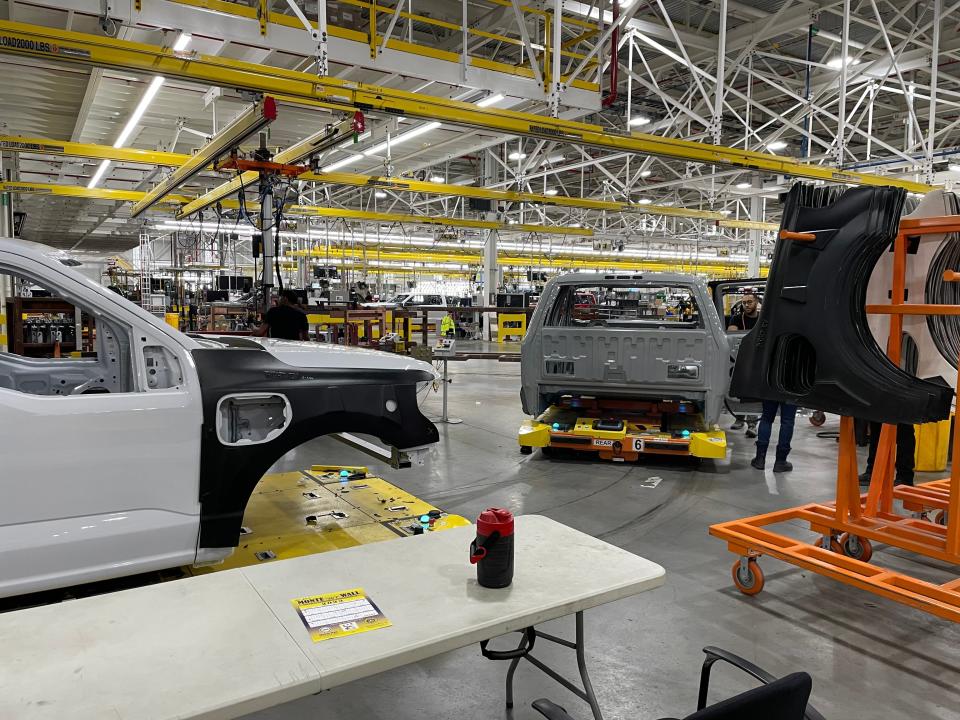
Ford's Rouge Electric Vehicle Plant is equipped with automated pallets that move partially built F-150 Lightnings from station to station on the assembly line.
Timed assembly stations
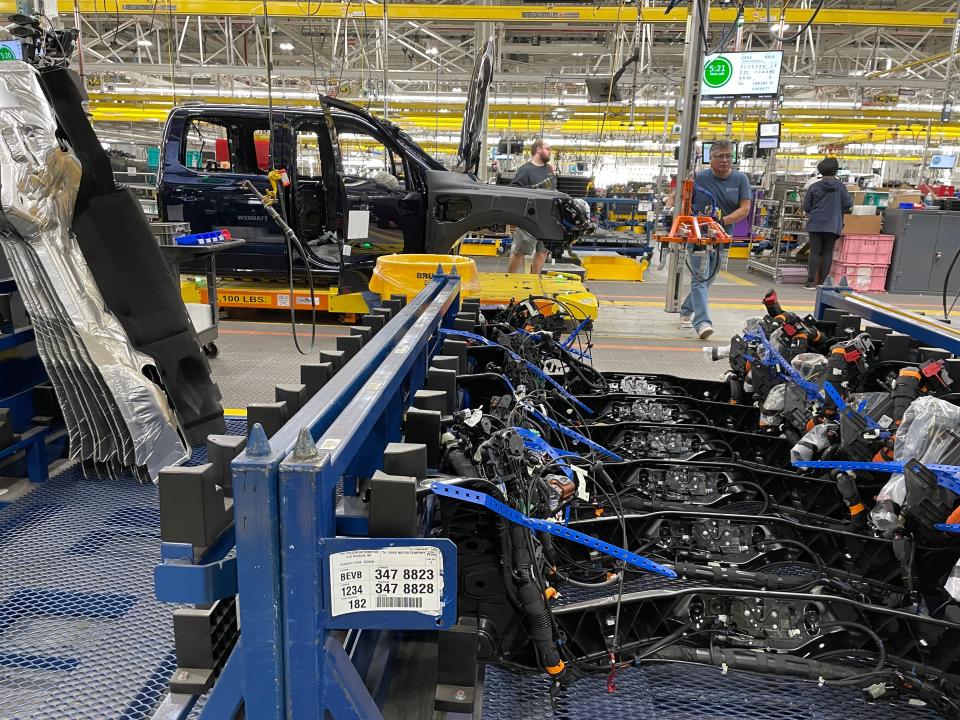
The F-150 Lightning stops at each human-staffed assembly station, where a timer lets employees know how long they have to install their assigned parts before the truck needs to move on. Ford is trying to increase output at the factory to fill the 200,000 reservations it received for the all-electric truck.
Robots work alongside humans
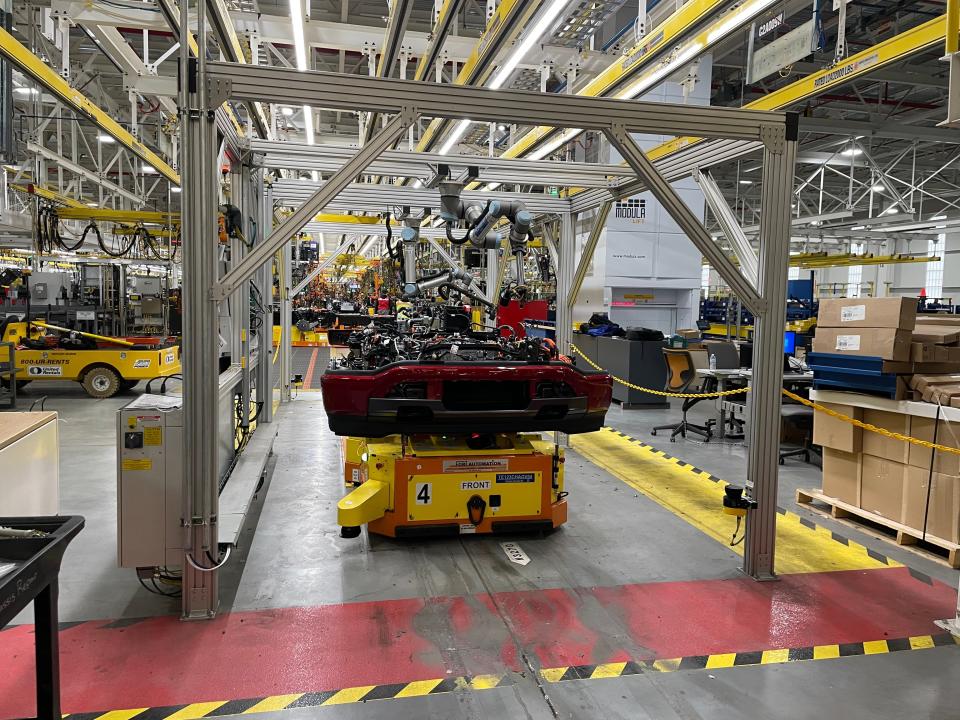
Another automated pallet on the assembly line stops with the undercarriage of an F-150 Lightning at a station manned by robots, which are programmed to complete some precise work on the vehicle. It will move next to a human-staffed station where other work will be performed and checks will be made.
From robot to human
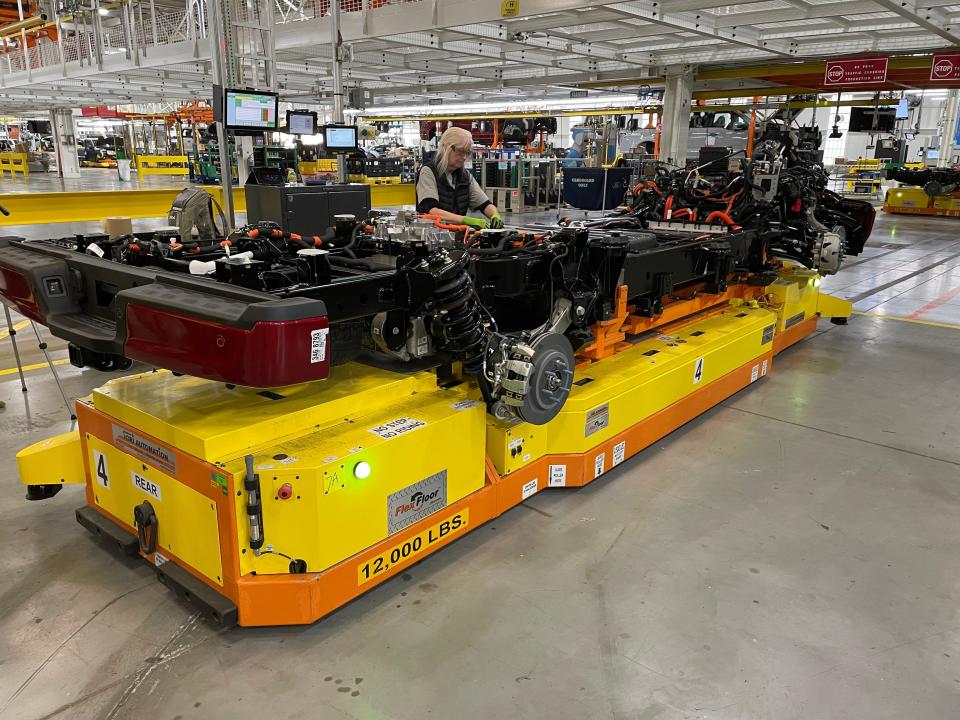
An assembly worker takes over after this partially built F-150 Lightning stopped at a robot-manned station. The workers can move freely between stations and around the vehicle as it moves down the assembly line. The automated pallet it's carried on senses when a person or other vehicle crosses its path and comes to a stop.
Less clutter
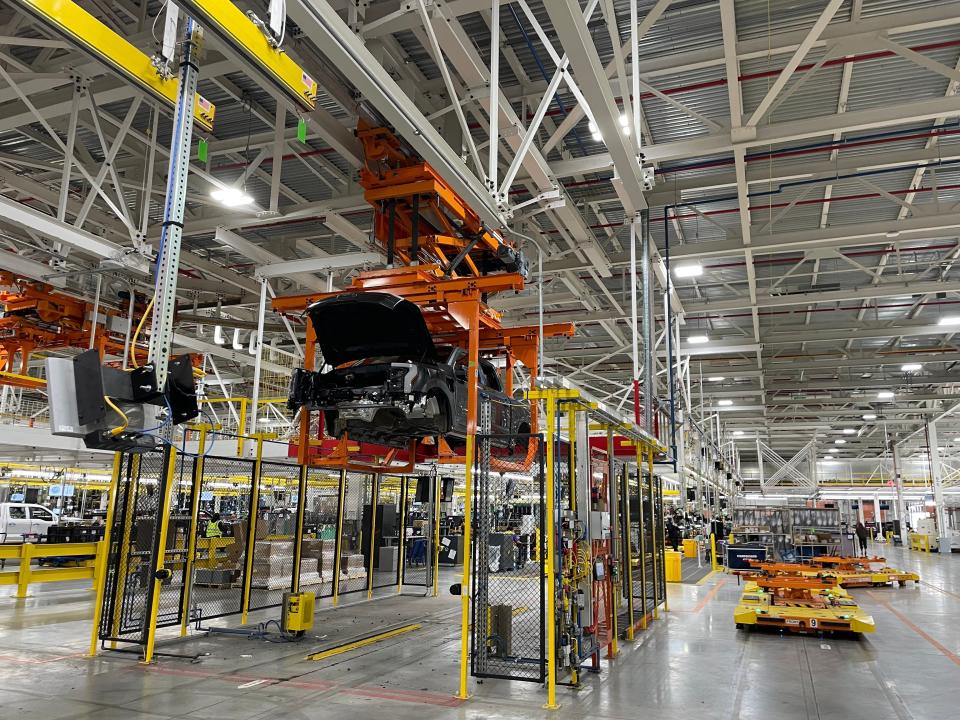
Ford's Rouge Electric Vehicle Center is less cluttered than the average vehicle assembly factory, illustrating how much less complexity is built into an EV. The United Auto Workers union, which represents Ford's assembly workers, has warned for years that EVs will require fewer jobs than their gas-powered counterparts.
Active worksite
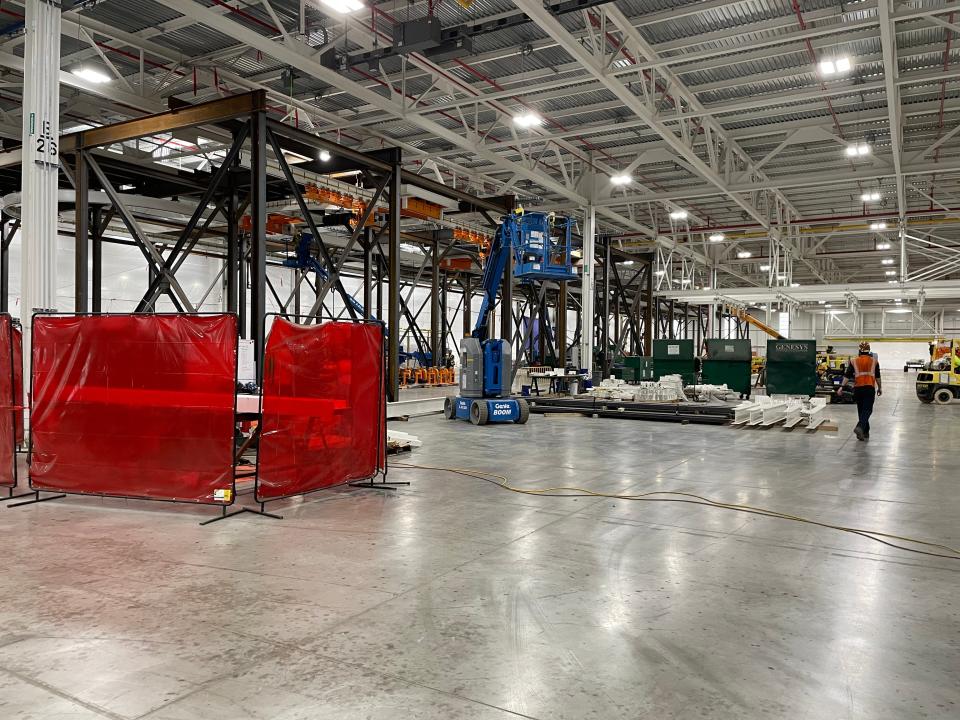
At the end of the existing assembly line, an expansion has already been erected and the interior is under construction. Inside this addition, work on a new mechanism to carry vehicles above the the assembly line is already underway. Here, Ford can validate this new technology while the existing line continues to crank out trucks.
Charging up
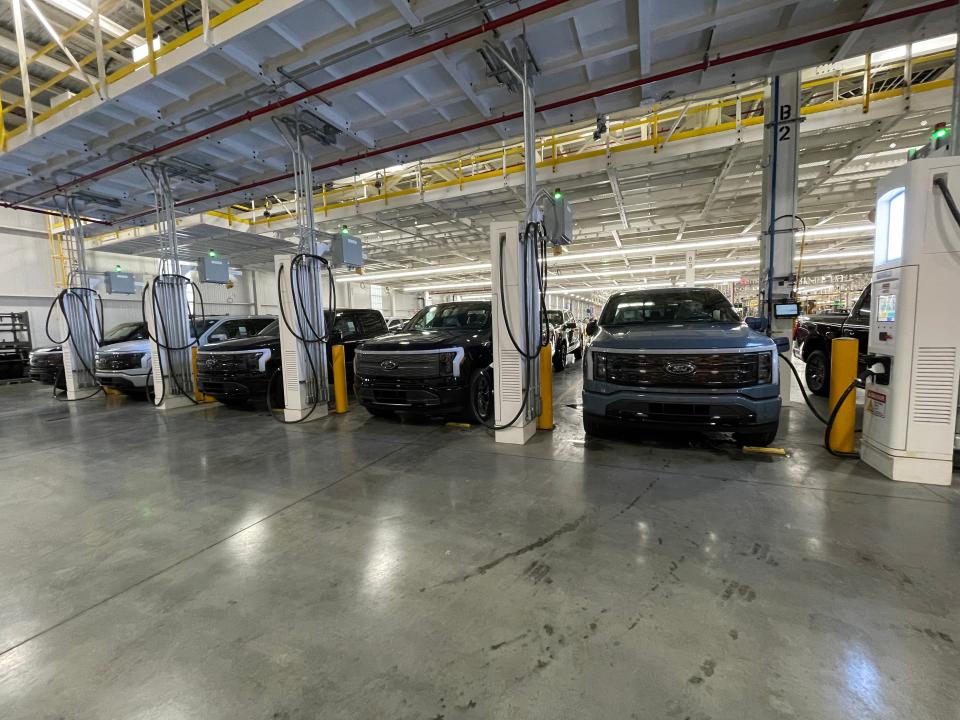
Completed F-150 Lightnings fill up at charging banks in Ford's Rouge Electric Vehicle Center.
End of the line
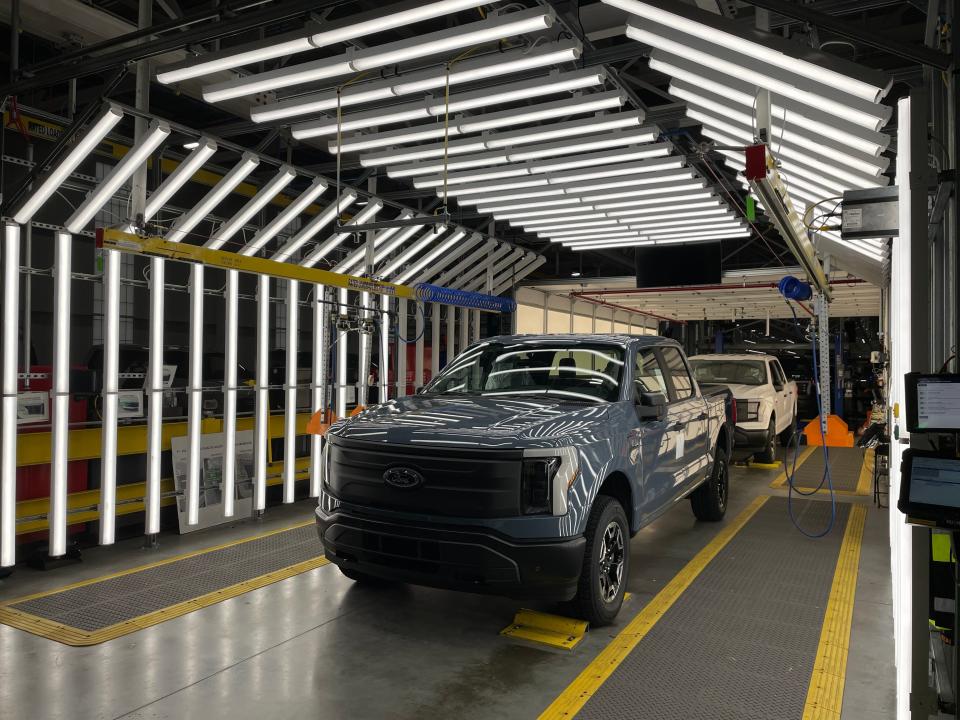
A completed F-150 Lightning reaches the end of the assembly line at Ford's Rouge Electric Vehicle Center.
Finished product
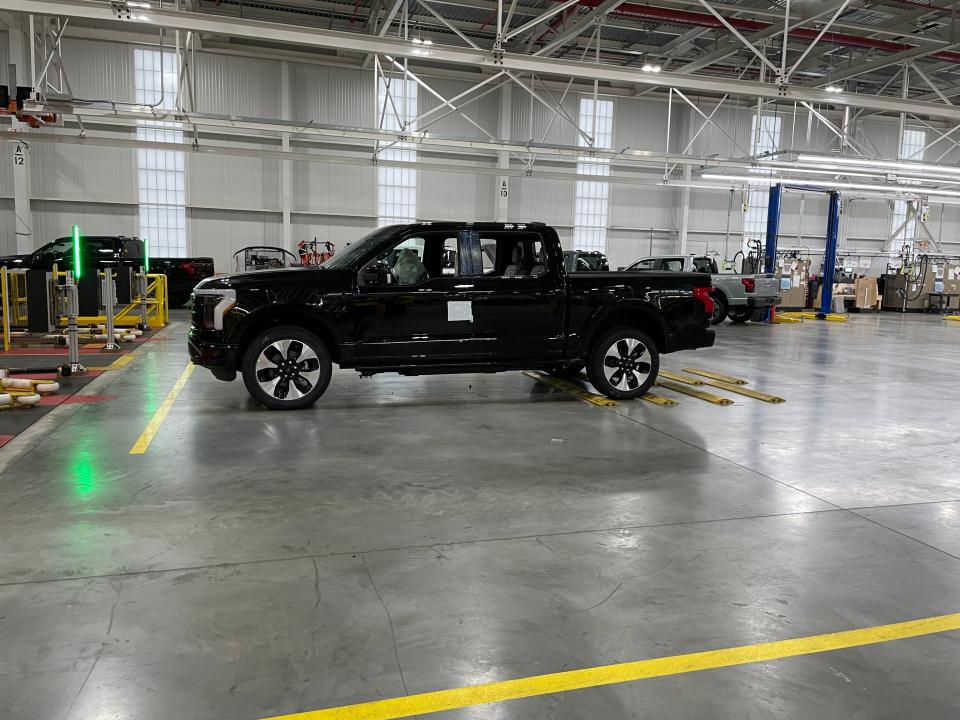
A completed F-150 Lightning awaits charging and other inspections after completing its journey on the assembly line at Ford's Rouge Electric Vehicle Center.
Read the original article on Business Insider

